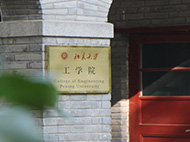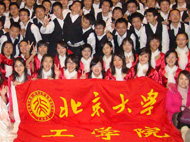北京大学力学与工程科学学院
航空航天工程系学术报告
|
题目:Self-excited low-frequency flow oscillations over an airfoil: System identification, coherence resonance, and genetic programming control |
报告人 Prof. Larry Li
Department of Mechanical and Aerospace Engineering,
Hong Kong University of Science and Technology
主持人:黄迅 教授
时间:6月27日(周五)上午10:00
地点:新奥工学大楼3048会议室
报告人简介:
Dr. Larry Li is an Associate Professor and Associate Head of the Department of Mechanical and Aerospace Engineering at the Hong Kong University of Science and Technology, and a Fellow of the Royal Aeronautical Society. He received his BASc and MASc in Mechanical Engineering from the University of British Columbia, where he was an NSERC Scholar in the Applied Fluid Mechanics Laboratory. He received his PhD from the University of Cambridge as a Bill & Melinda Gates Scholar. His research bridges fluid mechanics, thermoacoustics and nonlinear dynamics, with applications from aircraft propulsion to industrial spray processes. He has published in leading journals in fluid mechanics, nonlinear dynamics and thermofluids, and has led multiple research projects funded by the Hong Kong Research Grants Council as well as educational initiatives supported by the University Grants Committee of Hong Kong.
报告内容摘要:
At low Reynolds numbers, laminar separation bubbles on an airfoil can profoundly alter stall behavior by generating self-excited low-frequency flow oscillations (LFOs). In this seminar, we investigate LFOs at Re=10^5 using a combination of wind tunnel experiments, stochastic modeling, and data-driven flow control. First, we demonstrate that the airfoil’s lift fluctuations satisfy the Chapman-Kolmogorov equation and exhibit joint-probability distributions characteristic of a Markov process. By extracting the Kramers-Moyal coefficients and identifying the critical Markov time scales, we show that the LFO statistics obey a Fokker-Planck equation. A Van der Pol oscillator model, calibrated via adjoint-based optimization, then reproduces both the Hopf bifurcation point and the ensuing limit-cycle amplitudes. Next, we provide experimental evidence of coherence resonance: by injecting white noise during the stall transition, we observe peak coherence at intermediate noise amplitudes. This is modeled using a noise-driven Van der Pol oscillator, with parameters identified via the Fokker-Planck framework. Finally, we apply genetic programming control to suppress the LFOs. The optimized forcing policy reduces the oscillation amplitude by over 70% with minimal power input. Flow visualization reveals that this improvement arises from a reshaped laminar separation bubble, yielding higher lift-to-drag ratios. Together, these results deepen our understanding of LFO dynamics in laminar separation bubbles and offer practical control strategies for low-Re airfoil optimization.
欢迎广大老师和研究生参加!










